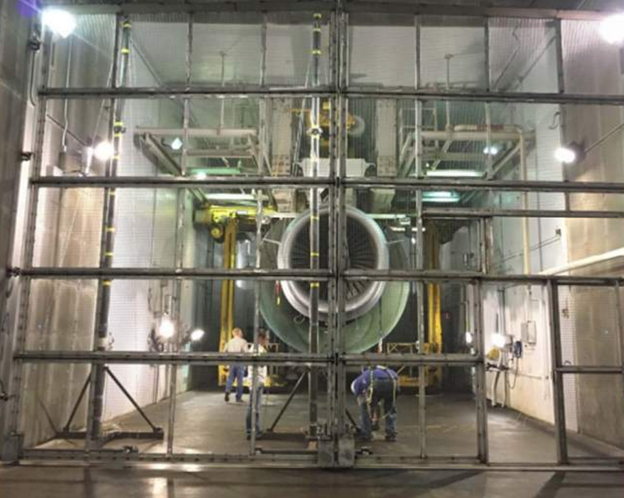Tinker Test Cell 9 Renovation, Building 3234

Client
US Army Corps of Engineers Tulsa District
Project Location
Tinker Air Force Base, OK
Services Provided
Risk Analysis
This project includes the renovation of an aircraft engine test cell and support areas to provide a safe and reliable system that limits cell downtime and is able to test more than a dozen different types of aircraft engines. The renovation consisted of the upgrade, refurbishment or replacement of the augmenter tubes, exhaust house silencer systems, inlet airflow, airflow screen, aerial work platforms, and the concrete slabs and structure.
The workshop focused on identifying and analyzing risks as well as developing value improving concepts to achieve testing acceptance criteria, mitigate risk, reduce cell downtown, provide new lift platforms, construct compressed air station, increase storage of critical spare parts, obtain pre-selected crane locations, extend contractor working hours, and establish maximum downtime limit for test cells.
During the workshop, 33 risks were identified and some of the more significant risks included escalation due to lack of competition, construction schedule creep, monorail conflicts with turning vanes, and restricted contractor access to maintenance bays. Of the 33 total risks,13 risks were promoted for quantitative analysis and planned risk response.
Items rated as influential to the project were promoted for quantitative analysis. The primary function of cost risk analysis is to determine an accurate project contingency reserve amount and establish a cost value for each contributing risk. The team used Monte Carlo simulations during the quantitative risk analysis process to reach a forecast value based upon a reasonable level of confidence. Contingency was analyzed using the Crystal Ball software. From the quantitative analysis, the team recommended adding an 18% contingency reserve to the estimated construction cost to account for known-unknown risks. The team also developed planned risk responses for the most influential identified risks.
For more detailed project information and results, please contact the SVS Project Manager directly

